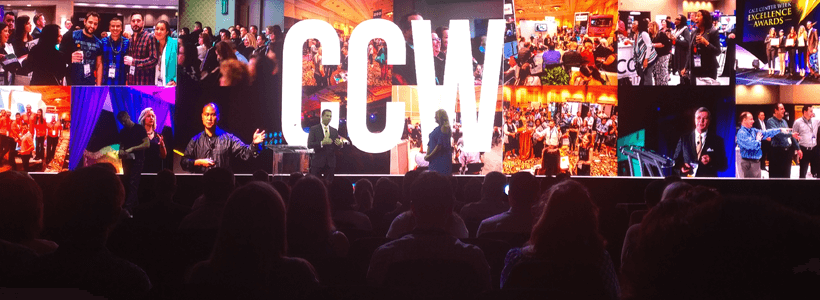Customer experience (CX) is centered on the needs and perceptions of the customer, not the business. This includes understanding customer needs at every stage of the CX life cycle, interactions with your business, and the difficulties they encounter.
But despite enthusiasm and investments in CX initiatives over the past few years, only one in four programs end up being successful and produce tangible results. Due mostly to flaws in strategy and execution, great customer experiences are still out of reach for most organizations.
CustomerThink’s new CX Success research uncovers what truly defines winning CX initiatives. These findings can help CX leaders effectively prove CX return on investment and give their customers great experiences.
The differentiating characteristics of a winning CX initiative are:
- A CX vision that goes beyond fixing problems
- Connects CX improvements to key business goals
- Stronger CX talent and culture
- Invests more in enabling technologies
- More sophisticated feedback analytics and metrics
- Wrap-up
A CX vision that goes beyond fixing problems
In this report, “easy” was the top CX attribute believed to drive customer loyalty, cited by 83% of respondents. But, 76% disagreed that “To be successful, CXM (Customer Experience Management) should just focus on making experiences easy.” While fixing problems and being “easy” is clearly important, it’s not the only thing that matters.
According to CustomerThink, 44% of all CX initiatives chose fixing touchpoints as their primary CX strategy but only achieve a success rate of 18%. On the other hand, 14% of CX initiatives that focus their CX strategy on creating unique experiences achieve a higher success rate of 56%. Improving customer touchpoints – while a common and necessary starting point – does not yield the best returns.
Winning CX initiatives pay attention to the emotional and human elements and being able to customize and personalize experiences. 80% of CX professionals believe human-based interactions are better at creating memorable experiences. These personalized, emotional, and more human interactions with customers are more effective at driving customer loyalty than “easiness”.
When it comes to moving the needle on customer experience, getting the basics right is table stakes. Experiences that evoke an emotional response is what differentiates winning CX initiatives.
Connects CX improvements to key business goals
The single biggest predictor of winning CX initiatives is return on investment (ROI). When it comes to CX, ROI comes in different flavours and can’t be defined by just percentages. Winning CX initiatives have the potential to turn customers into champions and produce success in the form of referrals, testimonials or case studies.
Still, the numbers matter. Winning CX initiatives has a higher 26% gap in positive payback over developing initiatives and 19% gap in reduced operational costs. For most companies, investing in initiatives, people, and technology requires CX leaders to compete for budget dollars just like everyone else.
Key stakeholders want to what benefits CX initiatives will bring to the table and how it aligns with corporate goals. It’s important to bring both customer quotes and hard numbers to the table when building a compelling business case.
Stronger CX talent and culture
A good CX strategy not only considers customer touchpoints, but also takes note of the employee experience. 100% of CX professionals agree that CX initiatives don’t succeed without engaged employees.
This report found that having the “right” talent is a mix of quantity (how much employee time is being allocated to CX initiatives) and quality (depth of CX skills). While winning CX teams are bettered staffed across the board, driving change and design/innovation are two top skills missing in at least 50% of all CX initiatives.
Creating and nurturing a customer-centric culture – through behaviors, practices and standards – encourages employees to focus on delivering outstanding customer experiences. Winning CX initiatives show higher levels of CX leaders “walking the talk” with a 10% gap over developing initiatives. Leaders who are as serious about “competing on customer experience” as they claim to be must show it through their personal behavior.
Investing more in enabling technologies
The right technology investments are an important piece of the puzzle in the quest for CX success. Winning CX teams cite better tools and systems to support customer feedback, analytics, and omni-channel experiences.
85% of professionals said technology was “extremely” (41%) or “very” (45%) valuable in enabling CX success at their companies. Technology that captured customer information between touchpoints was a critical foundation for the delivery of seamless customer experiences.
This report found winning CX initiatives reported higher rates of technology satisfaction and effectiveness than other groups. Coordinating experiences across journeys with omni-channel technology was by far the biggest differentiator for successful initiatives.
More sophisticated feedback analytics and metrics
This report found NPS was the most commonly used metric overall by 83% of CX initiatives. CSAT isn’t far behind at 69%. On average, each respondent reported their organization used three different metrics. 19% of respondents reported using just one metric, with NPS getting the lion’s share.
Winning CX initiatives used a mix of NPS and CSAT alongside custom metrics. This report found winning CX teams believed there is no “one-sized-fits all” metric and adapted their measures of success to align with corporate goals and KPIs.
In addition to traditional feedback channels, winning CX initiatives used non-survey feedback sources like text and social media at least 80% of the time. Winners are also differentiated by a bias towards taking action in response to feedback, instead of just understanding.
Wrap-up
CX is the new battleground for growth and loyalty. Creating winning initiatives will give you an edge over your competition and get credit where credit is due.
Focusing on creating emotional, human interactions; going above and beyond fixing problems, cultivating a strong customer-centric culture; using technology effectively; and mapping metrics to business goals will help you achieve CX success – and keep your customers coming back.
By following the best practices outlined in CustomerThink’s report, businesses will deliver a better customer experience and prove real business value.






